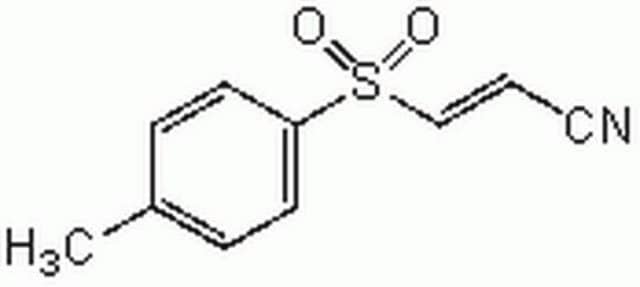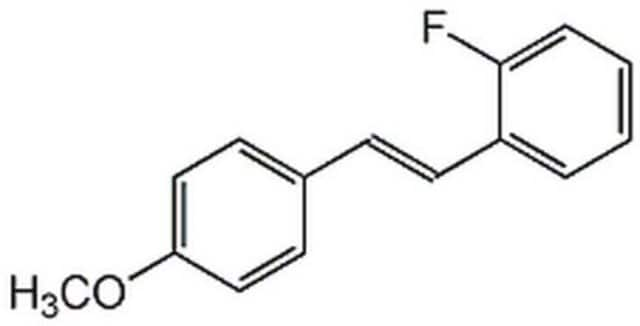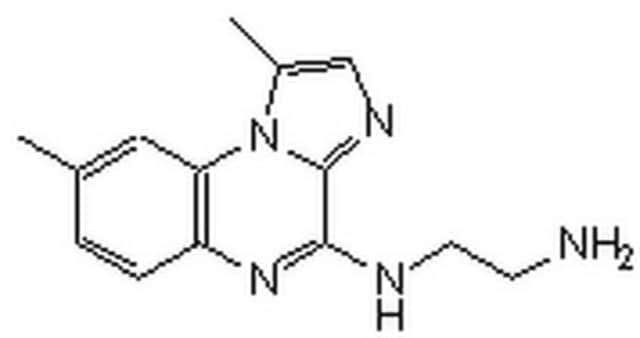B5556
Bay 11-7082
≥98% (HPLC), powder, NF-kB/TNF-α inhibitor
Synonyme(s) :
(E)-3-(4-Methylphenylsulfonyl)-2-propenenitrile
About This Item
Produits recommandés
product name
Bay 11-7082, ≥98% (HPLC), powder
Niveau de qualité
Pureté
≥98% (HPLC)
Forme
powder
Couleur
white
Solubilité
DMSO: >20 mg/mL
H2O: insoluble
Chaîne SMILES
Cc1ccc(cc1)S(=O)(=O)\C=C\C#N
InChI
1S/C10H9NO2S/c1-9-3-5-10(6-4-9)14(12,13)8-2-7-11/h2-6,8H,1H3/b8-2+
Clé InChI
DOEWDSDBFRHVAP-KRXBUXKQSA-N
Application
- a nuclear factor-kappa B (NF-kB) inhibitor to verify the action of the NF-kB signaling pathway in the production of interleukin (IL)-8
- a nuclear factor-kappa B (NF-kB) inhibitor to study the role of NF-kB activation in Mycoplasma hyorhinis -induced epithelial-mesenchymal transition (EMT) and cell migration
- a nod-like receptor family pyrin domain containing 3 (NLRP3) selective inhibitor to examine its effects on liver inflammation in mice after hematopoietic stem cell transplantation
Actions biochimiques/physiologiques
Caractéristiques et avantages
Code de la classe de stockage
11 - Combustible Solids
Classe de danger pour l'eau (WGK)
WGK 3
Point d'éclair (°F)
Not applicable
Point d'éclair (°C)
Not applicable
Équipement de protection individuelle
Eyeshields, Gloves, type N95 (US)
Certificats d'analyse (COA)
Recherchez un Certificats d'analyse (COA) en saisissant le numéro de lot du produit. Les numéros de lot figurent sur l'étiquette du produit après les mots "Lot" ou "Batch".
Déjà en possession de ce produit ?
Retrouvez la documentation relative aux produits que vous avez récemment achetés dans la Bibliothèque de documents.
Les clients ont également consulté
Articles
We offer a variety of small molecule research tools, such as transcription factor modulators, inhibitors of chromatin modifying enzymes, and agonists/antagonists for target identification and validation in gene regulation research; a selection of these research tools is shown below.
Notre équipe de scientifiques dispose d'une expérience dans tous les secteurs de la recherche, notamment en sciences de la vie, science des matériaux, synthèse chimique, chromatographie, analyse et dans de nombreux autres domaines..
Contacter notre Service technique














